#invasive bugs
Text
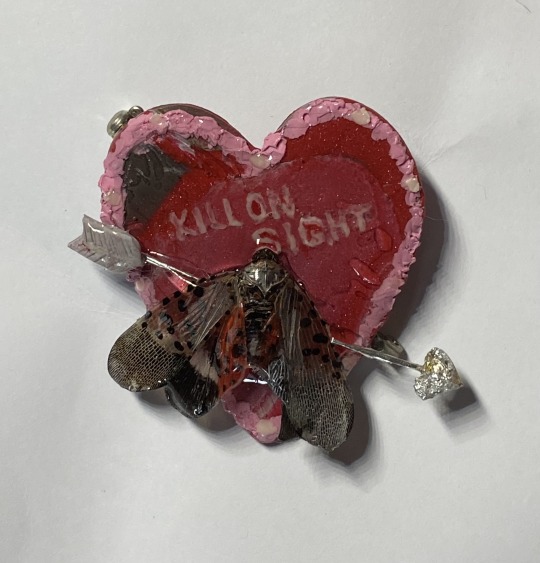
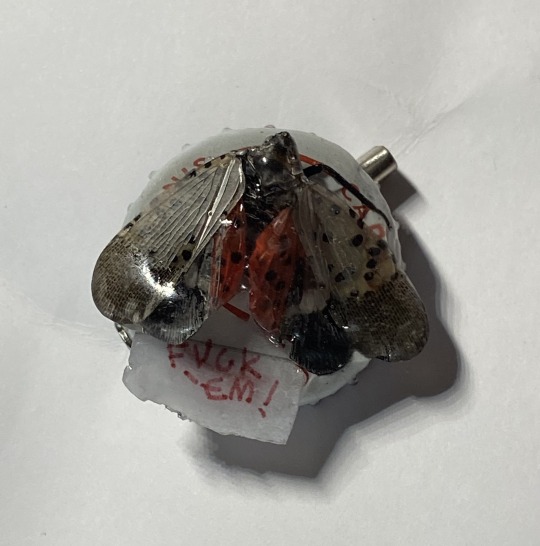

Lantern fly pins :) two lantern flies were harmed in the process of making these ❤️🖤🤍
#spotted lanternfly#lanternflies#lanternfly#Spotted lanternflies#my art#gateau art#commissions open#Bug#invasive species#invasive bugs
5 notes
·
View notes
Text
youtube
A 5-year-old New Jersey boy is doing his part to stop the invasion of spotted lanternflies... with his very own 'lanternblaster'
For more U.S. news, subscribe to NowThis News.
#lanternflies #invasivespecies #science #Politics #News #NowThis
#now this news#now this#solarpunk#invasive species#invasive bugs#bugs#insects#invasive insects#new jersey#USA#lanternflies#spotted lanternfly#Youtube
6 notes
·
View notes
Text

Bug of the Day
Spotted lanternflies are taking over my life...
#spotted lanternfly#SLF#lanternfly#invasive species#insect#Hemiptera#Fulgoridae#planthopper#Fulgorid planthopper#Lycorma#Lycorma delicatula#bug#BotD#bug of the day
284 notes
·
View notes
Photo
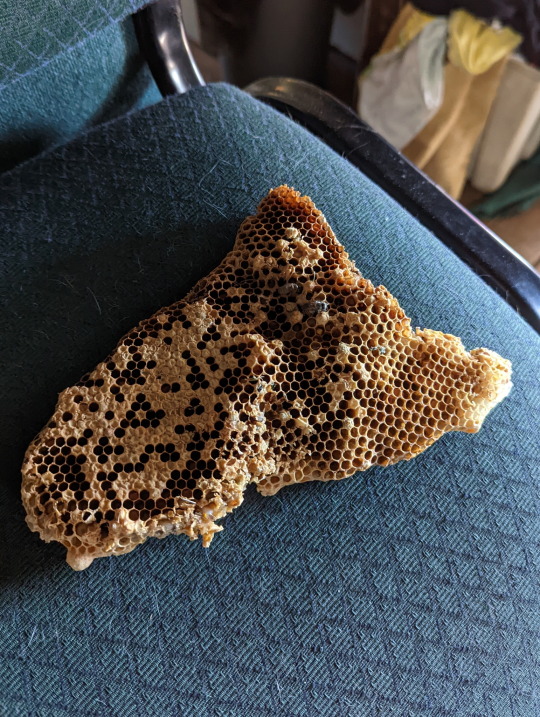
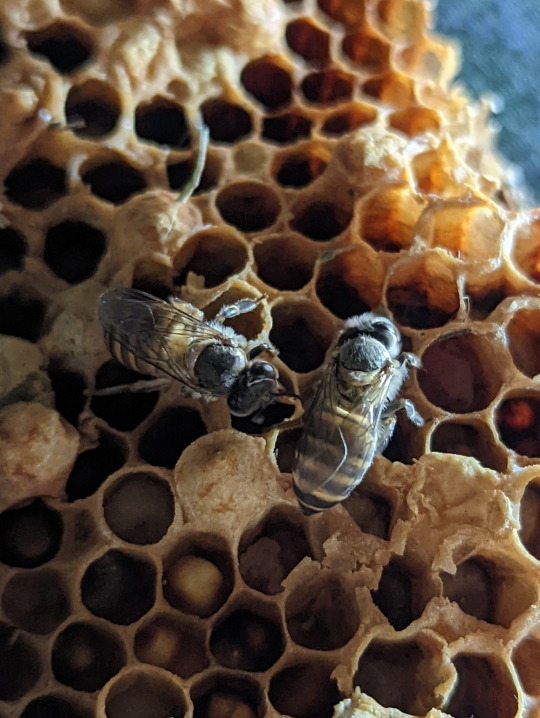
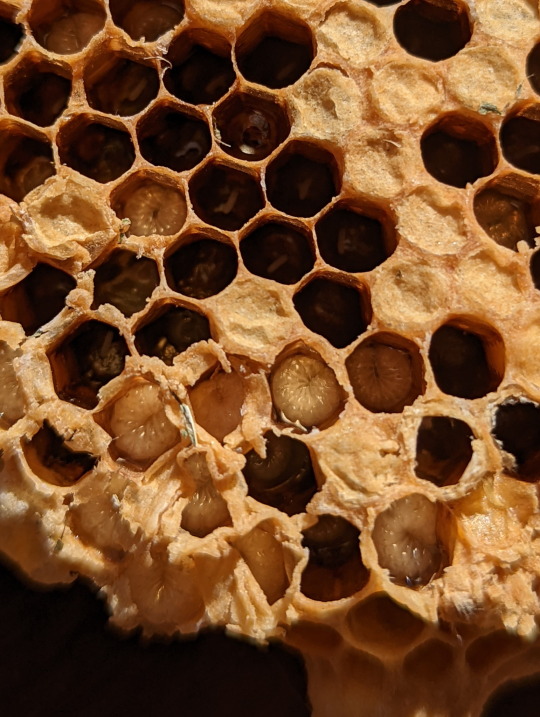
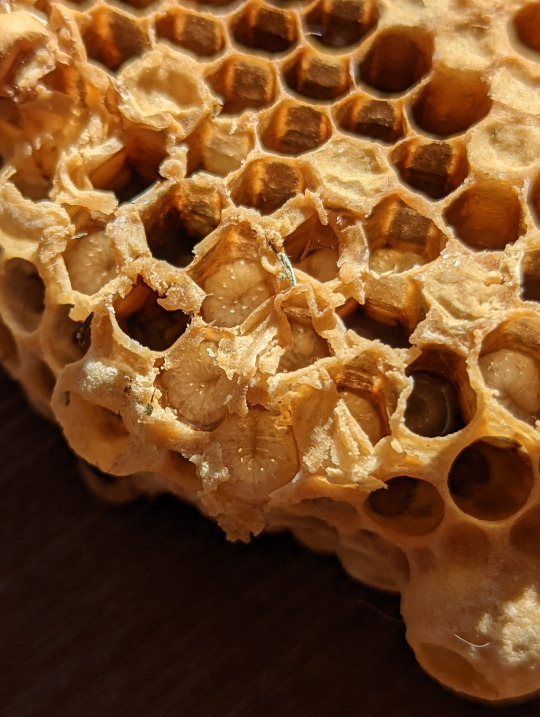
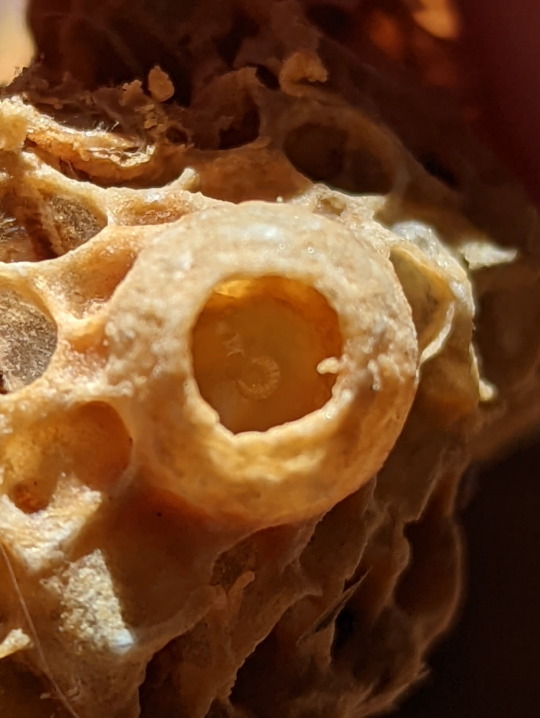


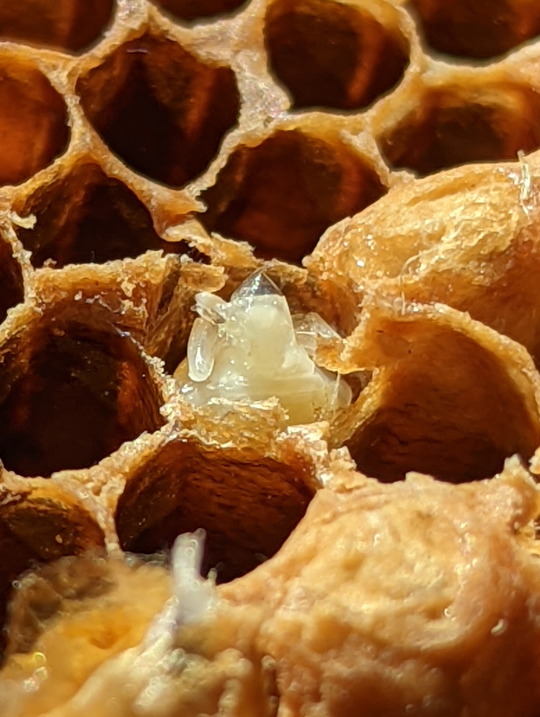
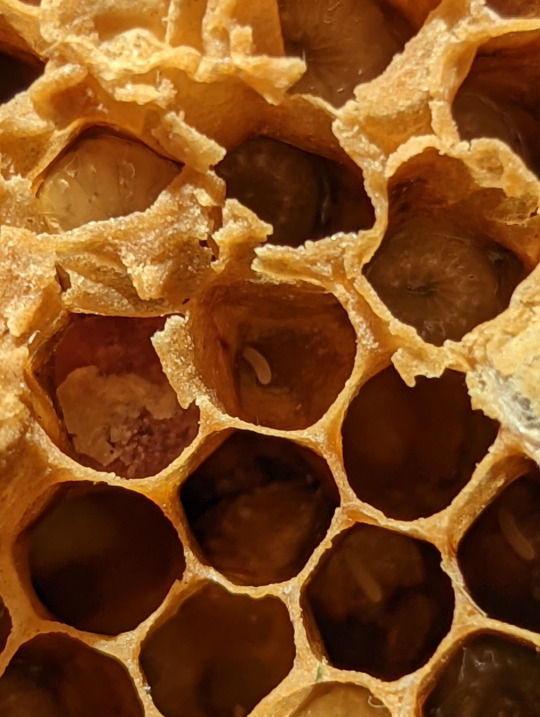
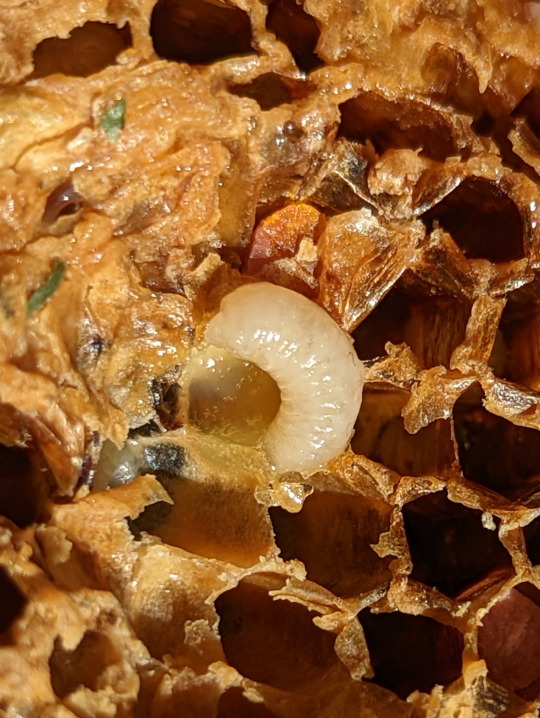
Nest of the Asian Honeybee
Here we have the poisoned nest of the Asian Honeybee (Apis cerana). If you’re wondering why the nest was poisoned, it’s because this species is actually quite damaging to this area. The Asian Honeybee not only leaves in competition with native bees over nesting areas and food, but they may also carry a certain nasty mite known as the ‘Varroa mite’ (genus Varroa), which can be detrimental to European Honeybee populations (Apis mellifera) (1).
Lets take a closer look at this nest shall we. First we’ll start off with the eggs. You can see an egg inside a brood cell in picture 9. The eggs are very small, and take about three days to develop. After which the fat little larvae emerge, curling up and waiting to be fed by the worker bees. When the larva becomes large enough, the brood cell will be sealed, so the larva’s pupation will be undisturbed. The adult bee will chew its way out of the cell after emerging from the pupae (2).
You can tell which brood cell belongs to which kind of bee based on its appearance. The drones have a distinctly dome-shaped cap with a large pour in the center (pic. 7). Then, of course, there’s the queen’s brood cell, which is large, round and on the edge of the nest (pics 5-6) (3).
When it comes to this species, it’s important to stay informed about the ways in which they are damaging for the environment.
Source (1)
Source (2)
Source (3)
Apis cerana
14/07/22
#Apis cerana#Asian Honey Bee#Apis#Cavity-nesting Honey Bees#Honey Bees#Apini#Anthophila#Bees#Hymenoptera#Varroa#Varroa Mites#Acari#Mites#invasive species#bugs#bugblr#bugs tw#bug#insects#insecta#insectblr#insects tw#entomology#insect#Arthropods#Arthropoda#beehive#hives#nests#invertblr
598 notes
·
View notes
Text


If you live in the northeast United States, then you’ve probably seen or at least heard of these guys. The Spotted Lanternfly. Or Lycorma delicatula.
They’ve been rapidly expanding and growing in population and while their presence is too new to know the exact impact they have on our native flora, they seem to pose a major threat to the apple and grape industries. They also excrete a honeydew that leads to mold growth on the plants they feed on.
So the states have put out this message to the public: “If you see it, smush it.”
And while I understand the need to be ruthless in invasive species response, I hope that people aren’t associating all lanternflies with this “bad bug” label.
So right now I’d like to showcase some cool/interesting species of lanternflies (the family name is Fulgoridae) in their native habitats :)

Peanut-Headed Lanternfly (Fulgora laternaria)

No Common Name (Phrictus diadema)
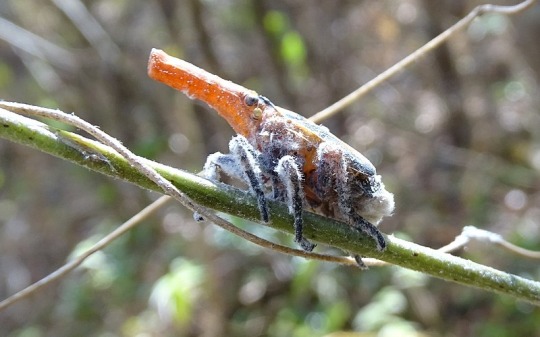
Malagasy Lantern Bug (Zanna madagascariensis)

No Common Name (Pyrops delessertii)
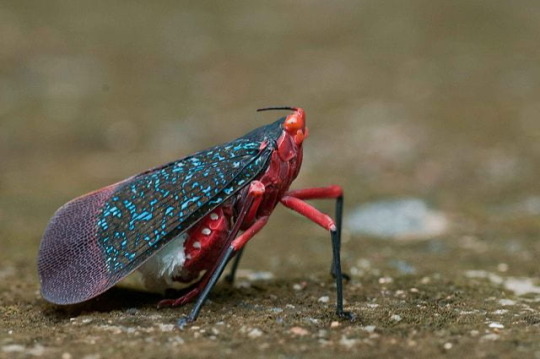
No Common Name (Kalidaysa lanata)
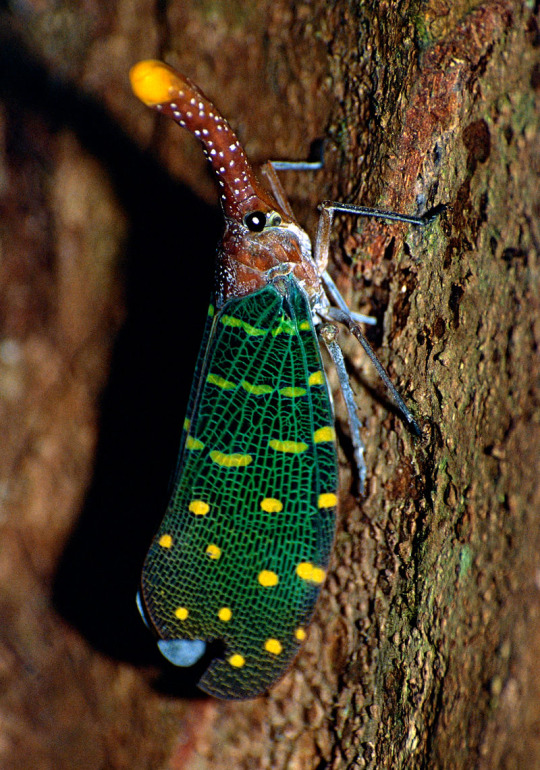
No Common Name (Pyrops intricatus)
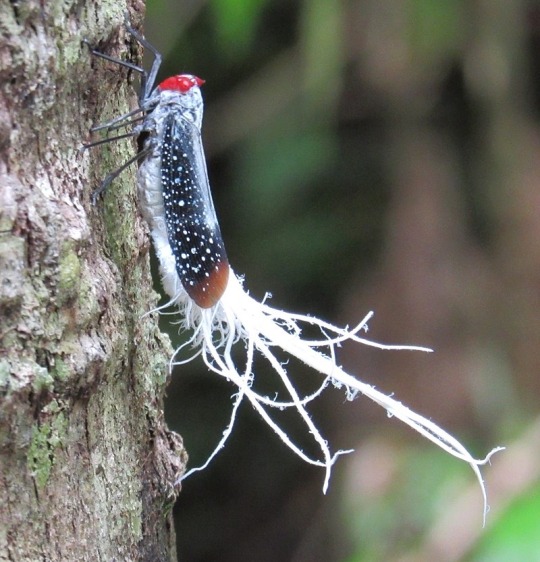
Wax-Tailed Planthopper (Lystra lanata)
Fulgoridae has over 500 species making it a fairly large hemipteran family, please go on a Wikipedia dive to look at all of them. Happy bugging :))
#insects#entomology#bugs#lanternflies#spotted lanternfly#bugblr#planthopper#ecology#invasive species#hemiptera#pretty pretty bugs#i love them all
158 notes
·
View notes
Text
Anonymous: more ideas of things invading your body,, snakes and eels living in your womb, making you look heavily pregnant. feeling it move around inside you,,,, nghh
Oh fuck yes anon let’s go
Imagine:
- Being tied up, upside-down, and having water pumped into your womb before eels are funneled in, every single one of them squirming tightly together while the funnel is removed from you. Your cervix closes up so that none of them can escape as your belly shifts, taut with water but swaying with the motion of the eels. The people having fun with you use their hands to gently shift the round distension back and forth; the weight of the water hanging off of your frame makes the motion torturous enough, but when it agitates the eels you can’t help but moan obscenely, feeling them thrash around inside.
- Accidentally falling into a snake’s nest in a cave while you’re out on a walk. You’re worried that the snakes are venomous, at first - but when the snakes all overpower you and leave you unable to resist while they slither towards your pussy, you know you should be worried about something else. Working as a collective, the snakes manage to get your clothes out of the way, and it’s over the moment the first one slides into your pussy and through your cervix, happily exploring your warm uterus. The entire massive knot of snakes is going into your womb, and as much as you want to resist, there are just too many of them to fight off…and it feels good, the snakes stretching you open in such a nice way and the feeling of snakes pressing against your inner walls surprisingly hot. You can watch your belly swell and squirm with the mass of bodies inside of you, and by the time they’re all in you look pregnant with triplets.
- A vine monster in the woods knocking you onto your hands and knees and ripping your clothes off to expose your pussy. It probes you almost gently at first, as if testing the waters - then quickly starts forcing more and more vines into you, easily reaching your cervix and prying it open by force. tendril by tendril, it slides its entire form deep, deep into your body, compressing and coiling and shifting as it tries to get comfortable, and you’re left a shaking, dripping mess on the forest floor by the time it’s entirely inside of you. Your belly hangs low and large enough that it presses into the ground beneath you while you feel the vine monster slide tendrils down your fallopian tubes to afford itself more space.
- A concept I’ve read about elsewhere - going swimming and feeling a small, narrow fish quickly squirm in between your swimsuit and your skin. You don’t know what the hell would compel a fish to do that, at first, but it quickly answers your question by slipping into your pussy and through your cervix without warning. It takes you so off-guard that you can’t help but moan - and you can’t resist when more and more fish start joining the first, only barely able to keep yourself afloat while the shoal uses your vulnerability to its advantage. By the time you can get back to shore, your belly is swollen with small, lumpy bodies, all squirming and twitching restlessly inside of you.
- An absolutely massive slug somehow sliding and squeezing its way into your womb to lay its eggs and let them hatch. There was already a bump in your belly when it slid in, but when the eggs start to hatch and grow, you grow with them. You birth a few of the new slugs at one point, the slime making your hole into a sloppy mess while they crawl out of you, but the rest of them stay with the first - and lay eggs of their own. The cycle continues like that, generations and generations of slugs breeding and growing inside of you, your midsection swelling beyond reason. A few slugs from every batch of eggs escape your body to live elsewhere, but the rest have taken up your womb as their home…and you can’t get them out, continually growing and growing…
#Originally posted May 2nd 2020#asks#anonymous#my writing#nsft text#patreon.com/septimusmoonlight#preg#forced preg#body invasion#cervix penetration#ovi#slugs and snails#bugs#tentacles
129 notes
·
View notes
Text
What Are Mosquitoes Good For?
Originally posted at my blog at https://rebeccalexa.com/what-are-mosquitoes-good-for/
Now that the weather has cooled down over much of the United States, insects have died back or gone into hibernation for the winter. So you may be tempted to be glad that the mosquitoes have disappeared for the time being. Maybe you even wish they wouldn’t come back next year! After all, they’re just mosquitoes, which annoy us and spread diseases, right? What are mosquitoes good for, anyway?
Much to the surprise of a lot of people, they actually have some pretty important ecological functions, and your local ecosystem would likely suffer if the mosquitoes were all exterminated. So today, I am going to be a mosquito apologist.
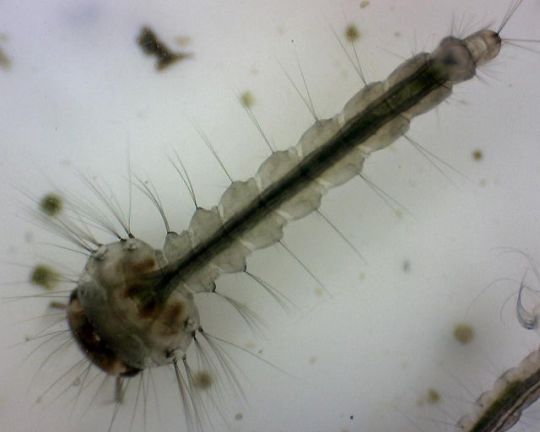
What Are Mosquitoes Good For? Food!
You may have seen hundreds or even thousands of mosquito larvae swimming in a pond or other fresh water. Perhaps you thought every single one of them came to find you after they became adults! They certainly are prolific; some species can lay as many as 300 eggs at once.
But this isn’t just because they want to have more young to annoy you, generation after generation. Rather, it’s because a lot of mosquitoes end up eaten before they even get a chance to reproduce. As eggs and larvae, they’re food for fish, amphibians, and aquatic insects and other arthropods. Once they take to the wing, birds and bats become major predators, as do adult dragonflies and other winged insects, plus spiders that catch them in their webs. While a single bat might not actually eat 1000 mosquitoes in a night, all those various predators do take a significant chunk out of the mosquito population.
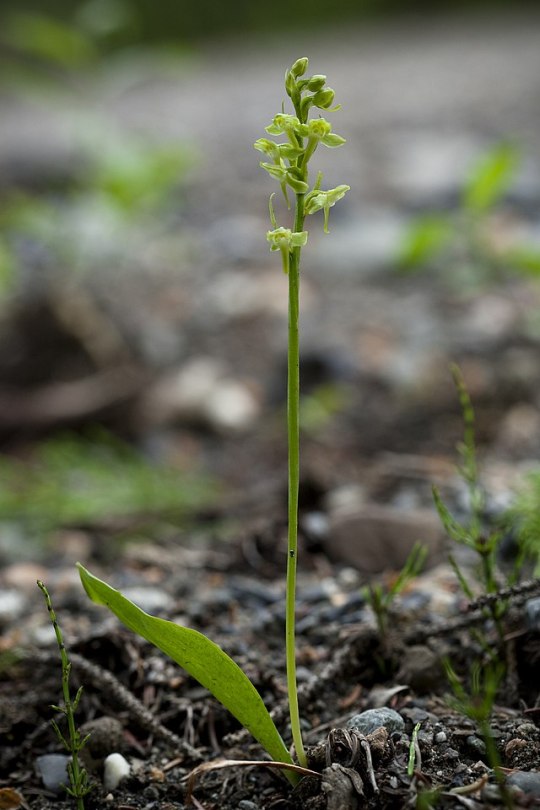
Platanthera obtusata is just one of many orchids that rely on mosquitoes for pollination.
What Are Mosquitoes Good For? Pollination!
Believe it or not, most mosquitoes aren’t out for your blood! The majority of mosquito species are entirely vegetarian; it’s only a few in which the females seek out blood to help produce eggs. Most mosquitoes drink nectar or plant sap, and in the pursuit of the former they play a vital role in pollinating the flowers they visit. Goldenrod and orchids are just two examples of groups of plants pollinated by mosquitoes. And while mosquitoes might drive Alaskans buggy, they are vital for pollination during the short Arctic summer.
What Are Mosquitoes Good For? Keeping Things in Check!
Mosquito larvae spend anywhere from a few days to a few weeks in the water where they hatched. They feed on a variety of bacteria, algae, and other microorganisms. Because they have a lot of growing to do, and need to prepare for their final molt to adult form, they have to eat a lot! That means they help keep their prey species’ populations in check. An overgrowth of algae, for example, can reduce the amount of sunlight that submerged plants have access to, and as the algae dies it increases the amount of nitrogen in the water. By constantly grazing on algae, mosquito larvae are helping to prevent these sorts of ecological imbalances.
What If We Made Mosquitoes Go Extinct?
So what are mosquitoes good for? Quite a lot, apparently! However, there’s no denying some species have also caused us a lot of grief. There have been calls to exterminate all mosquitoes, or at least every species that could ostensibly cause us problems through disease transmission. And to be sure, I don’t want to see people dying of malaria or West Nile virus, especially as these diseases often hit disadvantaged populations harder, with fewer resources for treatment. But it’s something where we need to weigh the consequences carefully.
What would happen if there were suddenly no more mosquitoes? Sure, the animals that prey on them could potentially find other sorts of food, but there would be an upset in the food web as the predators put more pressure on remaining prey species, which could lead to some of those species become locally endangered or even extirpated. Or the predators might drop in number as they failed to find enough food. Either way, getting rid of all the mosquitoes would have a negative impact on the food web.
Finally, and possibly most importantly–we may not fully understand the ecological roles mosquitoes have. As I wrote recently, ecosystems are incredibly complex networks of relationships among thousands of species, and for centuries we have been eradicating entire species without any thought as to what long-term effects their loss might have on their native ecosystems.

However, that brings up another point: the fact that there are invasive mosquitoes. Invasive species wreak havoc on ecosystems they’re introduced to, and it just so happens that one of the most notorious disease-spreading mosquitoes, Aedes aegypti, is invasive across much of the tropics, as well as subtropical and temperate areas worldwide. Spread through the slave trade, this mosquito is a prime vector for yellow fever, dengue fever, Zika, and several other pathogenic diseases affecting humans. Its cousin, Aedes albopictus, is also a disease vector and is more cold-hardy, meaning it could spread even further.
What’s the answer? Well, historically people just drained wetlands, much to the devastation of the native ecosystems there. More recently, the widespread and indiscriminate use of pesticides like DDT also knocked back mosquito populations (at least temporarily), but also killed off many other animals both directly and indirectly, to include nearly wiping out multiple raptor species due to eggshell thinning. Moreover, mosquitoes have developed resistance to pesticides, making them a less useful tool overall.
More recent innovations to control specific invasive mosquitoes hold some promise. A. aegypti, for example, has been genetically modified in labs to create a strain known as OX513A. Not only do the offspring die before they can reproduce, even if a OX513A breeds with a wild mosquito, but the offspring also apparently lack resistance to some pesticides. Biological control using Wolbachia bacteria inhibits A. aegypti‘s reproduction, and also makes them unable to carry certain diseases such as Zika and dengue fever.
So it would appear that the fight to control invasive species also has the bonus effect of stopping the mosquitoes most likely to give the rest a bad name.
Did you enjoy this post? Consider taking one of my online foraging and natural history classes, checking out my other articles, or picking up a paperback or ebook I’ve written! You can even buy me a coffee here!
#mosquito#mosquitoes#insects#invertebrates#arthropods#wildlife#wild animals#animals#entomology#biology#ecology#invasive species#nature#natural history#bugs#long post#environment#environmentalism#conservation
822 notes
·
View notes
Text

grasshoppa
#it was my mom who actually had the idea of making a grasshopper girl since i made mosquito and ant to cope w the bug invasions we had...#gotta complete the saga yk we have a million grasshoppers here... anyways naming her liz#art#my art#oc tag#furry#oc liz
55 notes
·
View notes
Text
There is a very large bee-like creature trapped in my ceiling right now and I do not know what to do about it
It walks over the flourescent light covers once in a while then disappears behind the ceiling tiles
What are you. How did you get in here
How do I get you out without killing you or being stung
Fuuuuuuck
#we had a nest of carpenter bees in our outer wall a few years back and had to have it removed because they were damaging the house#i am terrifed that this is a queen looking for a new nest#but what weirds me out is it's just one? don't they usually travel in like. swarms?#i am not educated enough on bees for this#bees#bugs#insects#mod post#i have homework i cannot be dealing with bee invasion rn
298 notes
·
View notes
Photo

@still-an-uniroic-fangirl submitted: not a great picture but this moth (?) found in [removed] (please remove location) has patches of scarlet under its wings only visible when it flies. i’ve only ever seen one or two
It’s a spotted lanternfly, which is invasive. Check your local agricultural or wildlife or natural resource department websites to see if they’d like you to report sightings. Usually it’s a simple online form. But it may depend on which county you live in and how established they are or aren’t there already.
REMINDER: Negative comments about bugs on my posts will get you blocked. Keep them to yourself.
136 notes
·
View notes
Text
CW: bugs

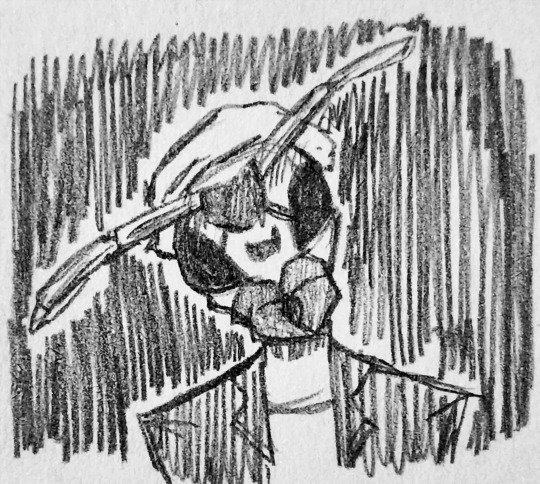

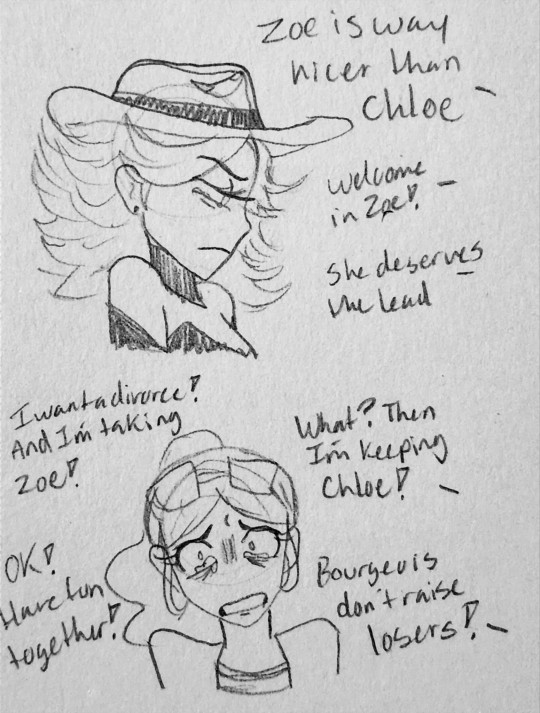
Are the things Chloe has done fucked up? Yes
Is the way her life has turned since Zoe appeared and slowly gained everything Chloe has been striving for also fucked? Yes
#miraculous ladybug#miraculous leaks#mlb#chloe bourgeois#zoe lee#i guess anti zoe but moreso in how the writers have positioned her in the story#cw bugs#tw bugs#mild horror#i think this idea of zoe coming in and slowly replacing chloe is so horrific#and the contrast of their bee n wasp inspired costumes add to this idea of invasion#its pretty neat horror content
356 notes
·
View notes
Text

By SREEJITH VISWANATHAN - Own work, CC BY-SA 4.0
#hammerhead worm#broadhead planarian#land planarian#planarian#worm#these are invasive in the u.s. canada and europe#but i'd still like it if we didn't go too wild with the “ahhh kill it” in the notes. it's not like i can stop you though#this guy's portrait was taken in asia where he's supposed to be 👍#for blacklist:#bug#insect
40 notes
·
View notes
Text

ウスキツバメエダシャク
新成虫かな。翅の淡い黄色と白い体が美し過ぎる。
R5.4
西表島
#ウスキツバメエダシャク#エダシャク#シャクガ#蛾#生き物#昆虫#写真#自然#虫#nature#animal#photography#entomology#bugs#arthropod#invasive species#insects#moths#moth#butterfly#西表島の自然
171 notes
·
View notes
Text

“The second the stinger went down his throat, Kian Stone was dead”
Finally listened to BITB and LOVED it!!
Close ups under the cut:


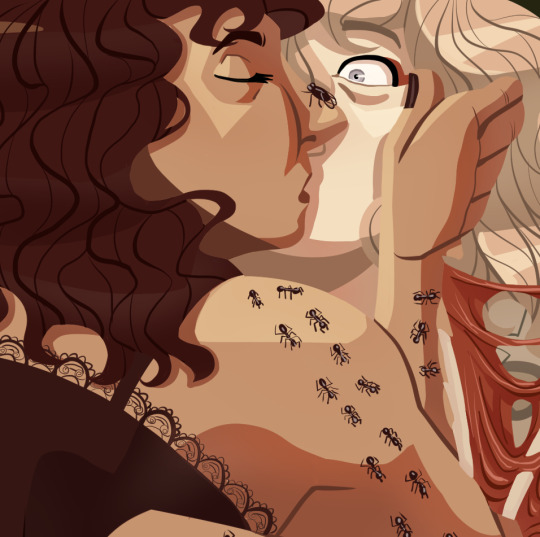
#jrwi#bitb#blood in the bayou#kian stone#Rebecca jones#Becky jones#jrwi bitb#jrwi spoilers#bitb spoilers#gore tw#body horror tw#yeah flower symbolism. I think I’m clever#me and the bug gf#bugs#tw bugs#edit: the flowers are oleanders. spider lillies. and black dahlias for those curious#fun fact spider lillies are invasive to the south Louisiana bayou#so that part actually works#dunno about the other two
133 notes
·
View notes
Text

for this my son was dead, and is alive again; he was lost, and is found.


some zoom-ins cause i was kinda just messing around w the shading but it turned out pretty good
#wizard101#w101#w101 oc#wizard101 oc#wizard101 fandom#w101 fandom#i dont know what the main tags are yet im learning a whole new language here#every fandom has their own ecosystem and i am an invasive species#this is Finny btw hes part bug and im insane about him#i THINK its obvious but he is a necromancer#and i have so much lore for him#sal art#oc: Finny
93 notes
·
View notes
Text

illus. miki kudo "Kakuna" from Crimson Invasion
137 notes
·
View notes